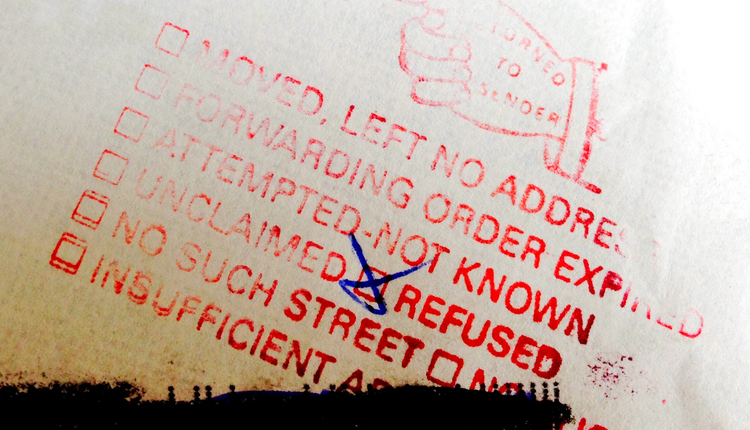Do you need new mail inserting equipment? Before you start getting dazzled by the product brochures, videos, and trade show demos there are a few things you should do. Getting a handle on exactly how your operation is working now and how you'd like it to look in the future are critical for matching your requirements to the equipment. This insightful exercise may suggest solutions that you weren't even considering.
Operations managers need to ask themselves why they need new gear. What is the driving force behind this major decision? Here are a few of the reasons that document operations managers will give when asked to justify the acquisition of a new inserter:
· A requirement for producing more mail pieces per day
· Lower the costs of excessive maintenance or down time
· Need better quality control or tracking
· Want more standardization among the equipment in the shop
· Support a format change in mail pieces, such as flats
Of the reasons listed above, the desire for more productivity is the most common. Achieving higher productivity may enable operations managers to reduce labor costs, eliminate underused equipment, or bring in more work. Replacing a slow machine with a faster model is one way to achieve these goals, but I've never jumped directly to that conclusion as the automatic best answer. My work with clients invariably includes an analysis of how to achieve the desired results with the tools already at hand. If that doesn't solve the whole problem then we'll help them decide on another course of action.
Managing Idle Time
It sometimes comes as a surprise that there are so many ways to improve the productivity of a mail inserting operation without investing in a whole new machine. The key to productivity is maximizing the time the machines are actually processing mail. This sometimes has more of an impact than the cycle speed of the equipment. The productivity of idle gear is always zero - even for the fastest machinery you can buy.
Here are some ideas for squeezing out more production without investing in a new inserting platform:
Improve the material - The productivity of some equipment suffers because operators run at low speeds to avoid excessive jams. Sometimes the envelope construction is poor, the paper stock is warped, or the inserts are just a little too wide. There are many causes of jams. Tracking, observation, and talking to operators will usually reveal the issues.
Decrease job change-over time - Switching outbound envelope sizes, adjusting fold plates, and fine-tuning insert feeders all eat up time when the machine could be inserting mail. Standardizing these variables or at least scheduling jobs with common characteristics to run sequentially eliminates excessive "wrenching" and testing at the beginning of each job.
Eliminate unproductive operator duties - The best use of an inserter operator's time is running the machine. It isn't searching the warehouse for envelopes or inserts. It's not flattening cartons and taking them to the recycle dumpster. And it isn't moving cases of material around to make room for the next job they are going to run. One can easily relinquish thirty minutes of production time between jobs if operators are responsible for these extra tasks. Observe operator activities and make adjustments if necessary.
Move Offline Operations to Inline
Some shops fold their primary documents and/or apply postage offline. Adding inline feeder/folders and postage meters to the inserters can completely eliminate several staging, transport, and record-keeping steps.
There are many additional strategies for improving the productivity of a mail inserting operation. Often, the benefits of upgrading to more modern equipment will produce a favorable ROI calculation. But if conditions that are hampering productivity before installing a new machine are not addressed, the higher throughput promised by faster equipment will not be achieved. And sometimes, just improving the workflow can eliminate or delay capital investments in new equipment.
Mike Porter is President of Print/Mail Consultants, an independent consulting firm that evaluates document operations workflows and helps clients make and implement strategic improvement decisions. For more ideas about how to find and fix operational bottlenecks, connect with Mike directly at mporter@printmailconsultants.com or follow @PMCmike on Twitter. Mike invites readers to visit www.printmailconsultants.com and sign up for Practical Stuff - the free newsletter dedicated to document operations professionals.
Operations managers need to ask themselves why they need new gear. What is the driving force behind this major decision? Here are a few of the reasons that document operations managers will give when asked to justify the acquisition of a new inserter:
· A requirement for producing more mail pieces per day
· Lower the costs of excessive maintenance or down time
· Need better quality control or tracking
· Want more standardization among the equipment in the shop
· Support a format change in mail pieces, such as flats
Of the reasons listed above, the desire for more productivity is the most common. Achieving higher productivity may enable operations managers to reduce labor costs, eliminate underused equipment, or bring in more work. Replacing a slow machine with a faster model is one way to achieve these goals, but I've never jumped directly to that conclusion as the automatic best answer. My work with clients invariably includes an analysis of how to achieve the desired results with the tools already at hand. If that doesn't solve the whole problem then we'll help them decide on another course of action.
Managing Idle Time
It sometimes comes as a surprise that there are so many ways to improve the productivity of a mail inserting operation without investing in a whole new machine. The key to productivity is maximizing the time the machines are actually processing mail. This sometimes has more of an impact than the cycle speed of the equipment. The productivity of idle gear is always zero - even for the fastest machinery you can buy.
Here are some ideas for squeezing out more production without investing in a new inserting platform:
Improve the material - The productivity of some equipment suffers because operators run at low speeds to avoid excessive jams. Sometimes the envelope construction is poor, the paper stock is warped, or the inserts are just a little too wide. There are many causes of jams. Tracking, observation, and talking to operators will usually reveal the issues.
Decrease job change-over time - Switching outbound envelope sizes, adjusting fold plates, and fine-tuning insert feeders all eat up time when the machine could be inserting mail. Standardizing these variables or at least scheduling jobs with common characteristics to run sequentially eliminates excessive "wrenching" and testing at the beginning of each job.
Eliminate unproductive operator duties - The best use of an inserter operator's time is running the machine. It isn't searching the warehouse for envelopes or inserts. It's not flattening cartons and taking them to the recycle dumpster. And it isn't moving cases of material around to make room for the next job they are going to run. One can easily relinquish thirty minutes of production time between jobs if operators are responsible for these extra tasks. Observe operator activities and make adjustments if necessary.
Move Offline Operations to Inline
Some shops fold their primary documents and/or apply postage offline. Adding inline feeder/folders and postage meters to the inserters can completely eliminate several staging, transport, and record-keeping steps.
There are many additional strategies for improving the productivity of a mail inserting operation. Often, the benefits of upgrading to more modern equipment will produce a favorable ROI calculation. But if conditions that are hampering productivity before installing a new machine are not addressed, the higher throughput promised by faster equipment will not be achieved. And sometimes, just improving the workflow can eliminate or delay capital investments in new equipment.
Mike Porter is President of Print/Mail Consultants, an independent consulting firm that evaluates document operations workflows and helps clients make and implement strategic improvement decisions. For more ideas about how to find and fix operational bottlenecks, connect with Mike directly at mporter@printmailconsultants.com or follow @PMCmike on Twitter. Mike invites readers to visit www.printmailconsultants.com and sign up for Practical Stuff - the free newsletter dedicated to document operations professionals.






